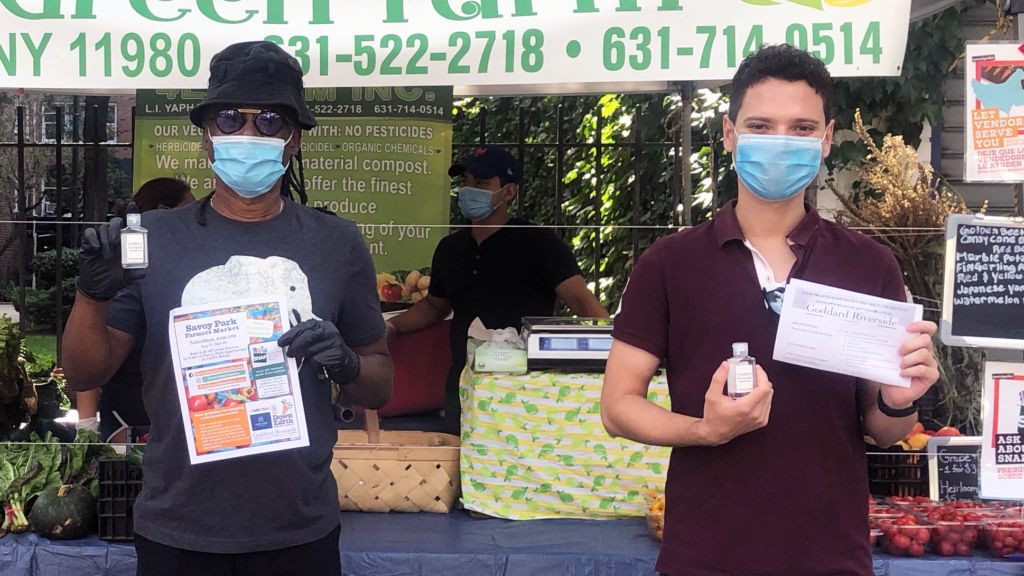
When New York City falls on hard times, staffers at our Resource Center are among the first to know. The Resource Center offers assistance with critical needs—from food stamps to rental assistance to healthcare—so it hears directly from people who need help.
These days, a lot of people need help.
“It’s overwhelming,” said Resource Center Director Wayne E. Tyre. “There’s been a surge in demand, and to have the weight of these households’ livelihoods on our shoulders has been a heavy lift.”
In March 2020, the center served 153 households. The next month that number doubled to 311, and the pace has not slackened. And it’s not just an increase in numbers, says Deputy Director E. Ronald Guy. It’s also an increase in complexity.
“Clients used to come with tunnel vision,” he explained. “Now they’re coming with a shopping cart. They have multiple issues they’re dealing with.”
Some of the most-requested areas of assistance include unemployment, rental assistance, food stamps and other food aid, immigration and legal aid.
“They’ve really needed everything,” said case manager Ruben Argueta. “Nobody had any means of paying for their rent after the pandemic began. But the utilities were also very important. You need internet for your kid to go to school from home, so paying that specific bill makes a difference.”
As new forms of government assistance arose, such as stimulus checks and COVID rent relief, they got added to the mix. “Suddenly when the economic stimulus began we started receiving calls,” said case manager Nathalie Pierre-Louis. “People were very confused between getting their regular tax refund and their stimulus. We had to do a lot of education to help people understand.”
Many of the center’s new clients have never had to ask for help before. They’re reluctant to admit they’re having trouble. So they wait until the last minute, when their situation is dire and they’re at an emotional breaking point. “My staff is becoming quasi-therapists,” said Tyre. “The first 15 or 20 minutes they’re trying to console people so they can get the work done.”
“One client told me she had 2 cents in her bank account,” Pierre-Louis recalled. “She was overwhelmed.”
Resource Center staffers agreed that one bright spot in this past year has been Goddard’s COVID Relief Fund, generously funded by our donors. The fund has given out more than $200,000 in direct aid, including more than $85,000 to Resource Center clients. These clients have used it for food (in the form of supermarket gift cards) and rent, with smaller amounts going for items ranging from transportation to medical supplies to technology assistance.
“Direct Relief has been a lifeline for a lot of people. The emergency food, the gift cards have been a lifesaver. People have come back to ask for those,” said Argueta.
With vaccines becoming more available in New York City, hope for an end to the pandemic is finally on the rise. But big worries still loom, especially for low-income tenants. Various measures are in place to protect people from eviction during COVID. But without a long-term solution, those people will soon owe enormous amounts of back rent that they can’t pay.
“The moratorium is setting people up to fail. We’re going to need two Resource Centers” to handle all the requests for help, Tyre said darkly.
Meanwhile, he’s thankful and concerned for his staff, who’ve had to handle the explosion in requests while switching to remote work and dealing with their own pandemic-related issues.
“The two words that come to mind are stressful and humbling,” Tyre said of his team’s COVID experience. “I’m so proud of them.”
Want to help New Yorkers deal with the impacts of COVID? Donate to our COVID Relief Fund.